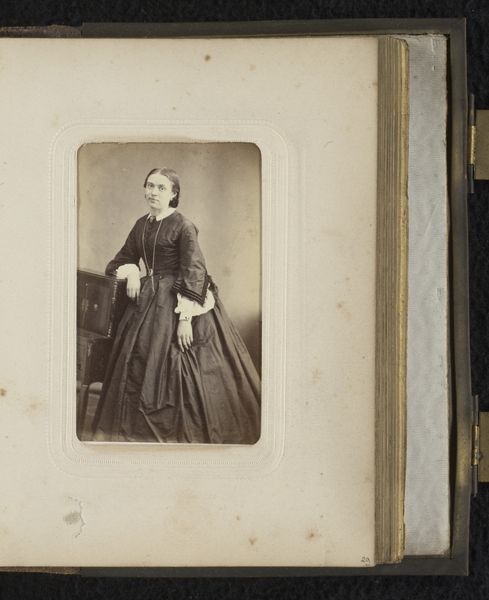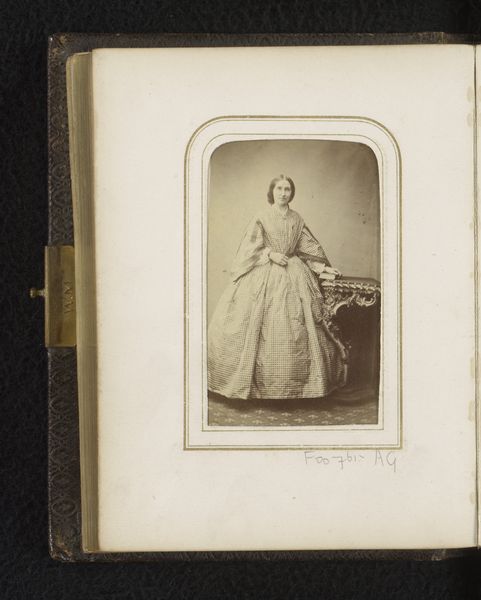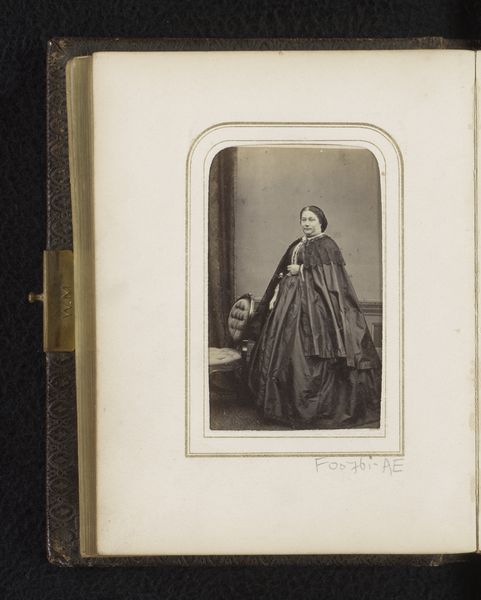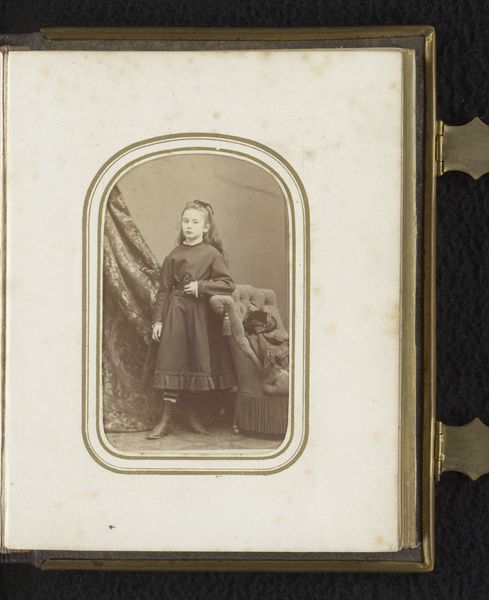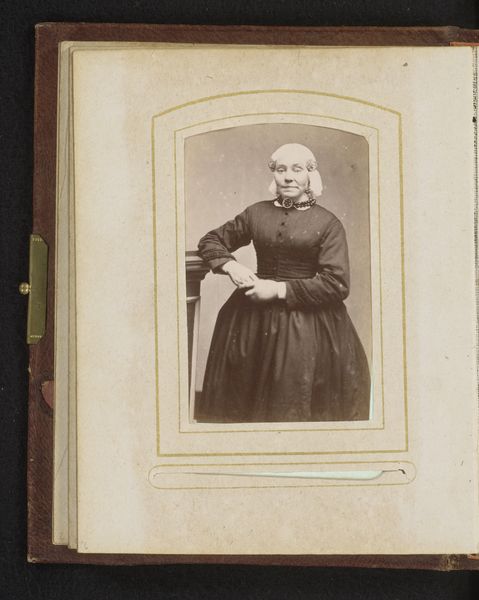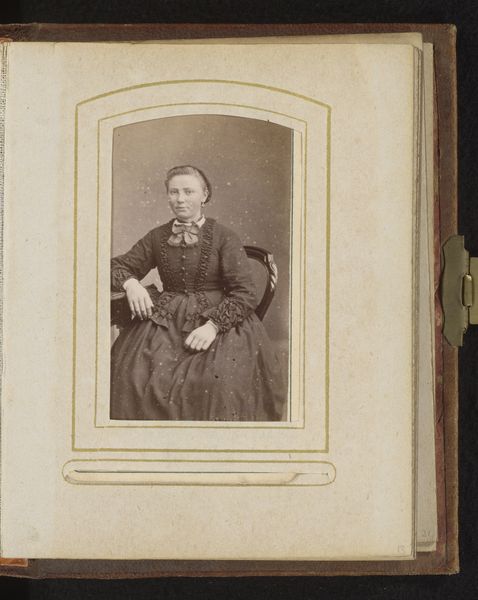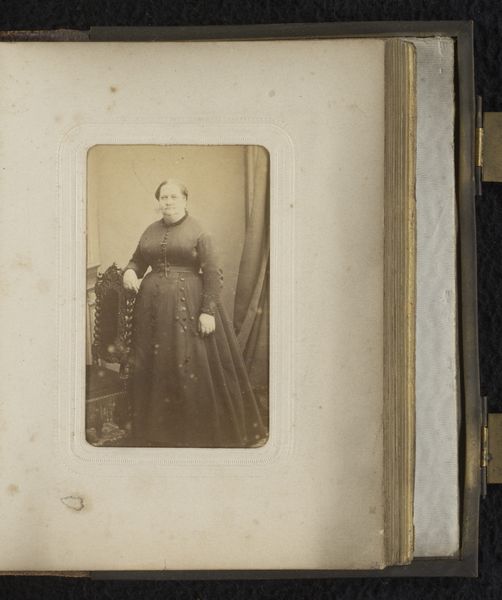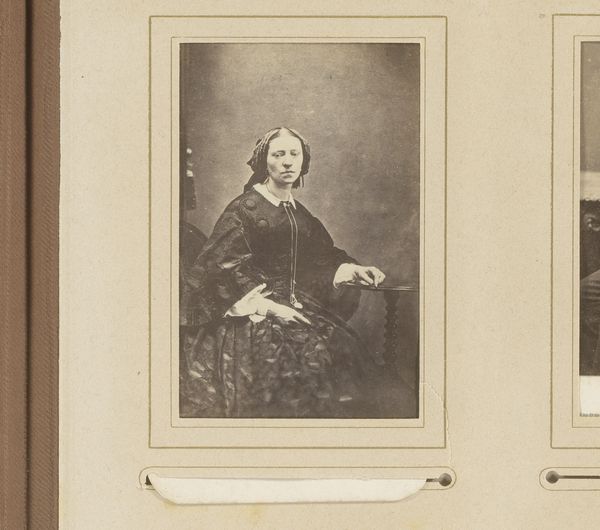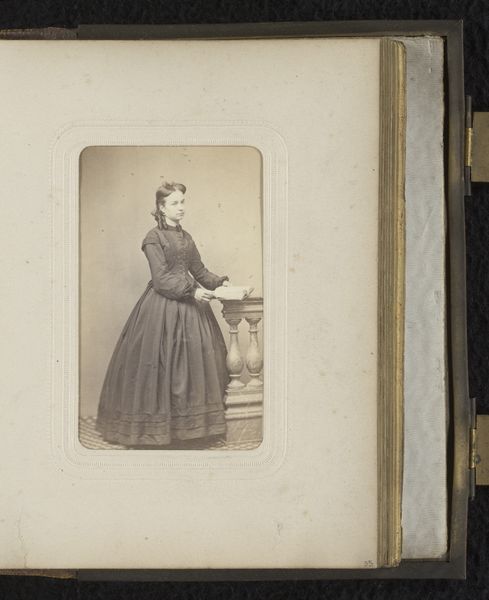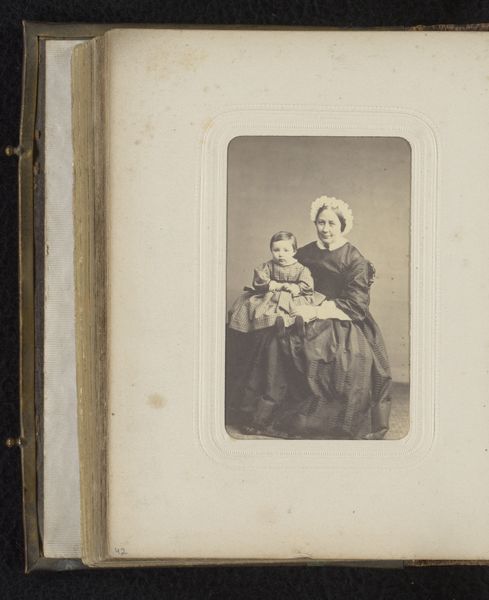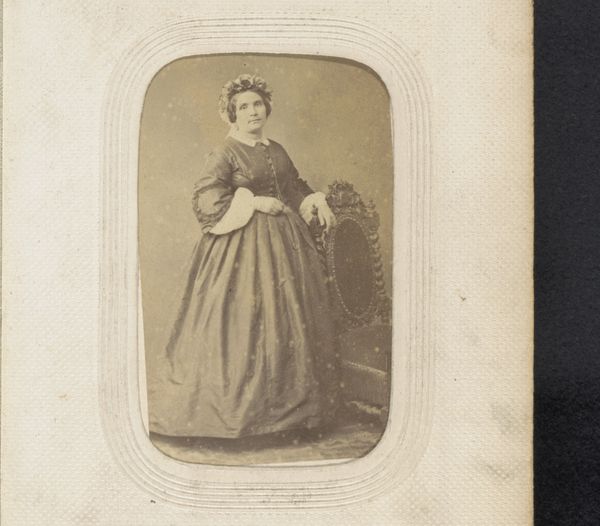
photography
#
portrait
#
figuration
#
photography
Dimensions: height 87 mm, width 53 mm
Copyright: Rijks Museum: Open Domain
Editor: Here we have "Portret van een zittende vrouw" by Eugène Pirou, likely taken between 1864 and 1904. It's a photographic portrait, and the tones are so muted; what really strikes me is the fabric, the clear importance of material display even in a relatively humble image. How do you approach this photograph? Curator: I am drawn to the material conditions that shaped this portrait. Photography in this period, while becoming more accessible, was still a significant investment, highlighting the sitter's and the photographer's access to certain resources. Editor: Resources, like time and money for sittings... Curator: Precisely. Also consider the labor involved in producing the photographic print itself, and how that labor relates to the final product. How does this tension influence our understanding of the sitter's social standing? Editor: Good point. The woman's dress and jewelry obviously signify a certain level of financial comfort, but the photograph itself cements that status through its very existence as a commodity and object of display. It is about showing the material display through a different material – photography. Curator: Yes. And don’t ignore the relationship between photographer and subject, a collaborative process made manifest in a single material object. Consider Pirou's labor as a business man in that collaboration and how that connects this intimate pose to larger structures. Editor: So, analyzing this photo beyond just its aesthetic qualities brings those social and economic structures to light, structures embedded in the materials. That's given me a completely new perspective. Curator: Indeed. Seeing art through the lens of its production opens doors to a wider historical understanding.
Comments
No comments
Be the first to comment and join the conversation on the ultimate creative platform.
